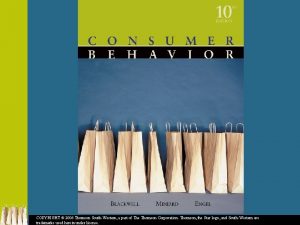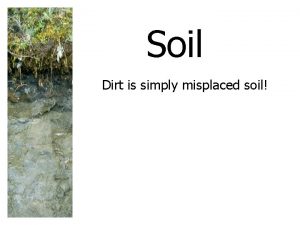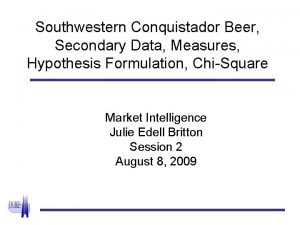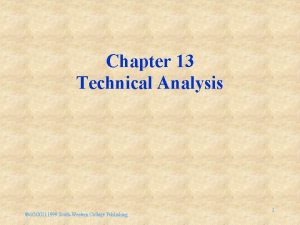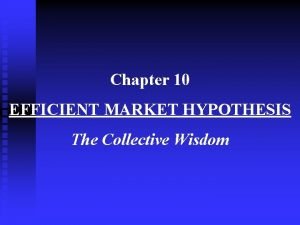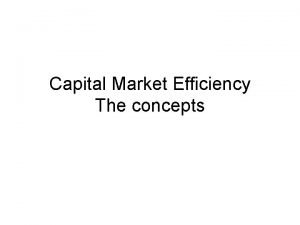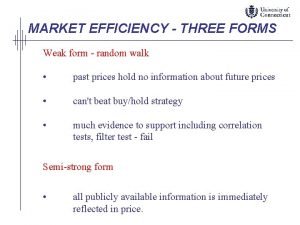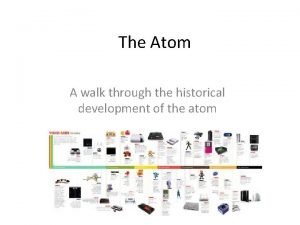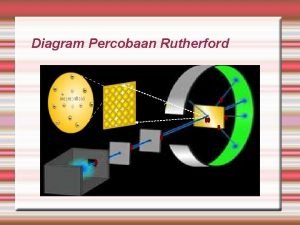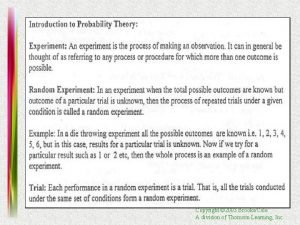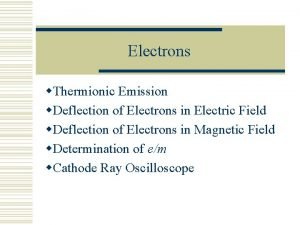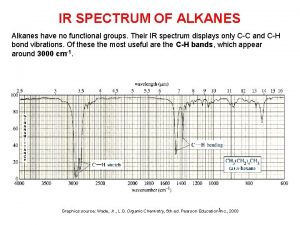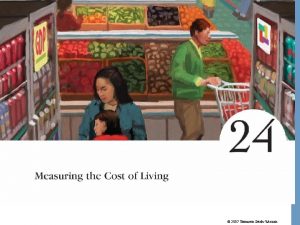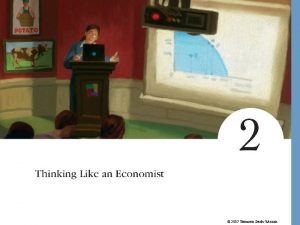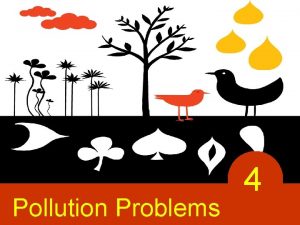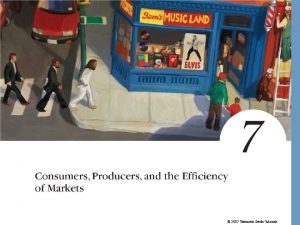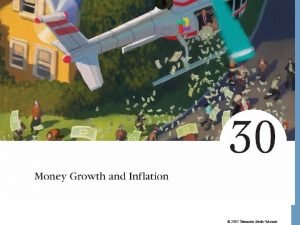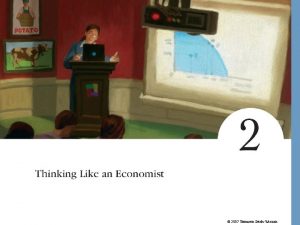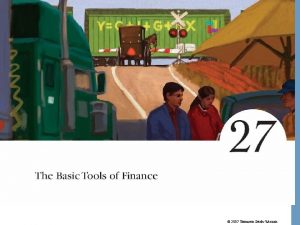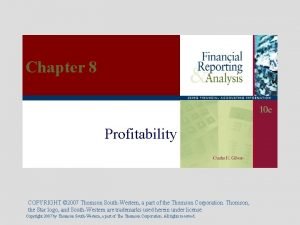2007 Thomson SouthWestern Lecture 4 i Market efficiency












































- Slides: 44

© 2007 Thomson South-Western

Lecture 4 i. ) Market efficiency, producer and consumer surplus ii. ) Review if time permits Professor Chris Wimmer Nov 1 2007

Consumers, Producers and the Efficiency of Markets • Revisiting the Market Equilibrium – Do the equilibrium price and quantity maximize the total welfare of buyers and sellers? – Market equilibrium reflects the way markets allocate scarce resources. – Whether the market allocation is desirable can be addressed by welfare economics. © 2007 Thomson South-Western

Consumers, Producers and the Efficiency of Markets • Welfare Economics – Welfare economics is the study of how the allocation of resources affects economic wellbeing. – Buyers and sellers receive benefits from taking part in the market. – The equilibrium in a market maximizes the total welfare of buyers and sellers. © 2007 Thomson South-Western

Consumers, Producers and the Efficiency of Markets • Welfare Economics – Equilibrium in the market results in maximum benefits, and therefore maximum total welfare for both the consumers and the producers of the product. © 2007 Thomson South-Western

Consumers, Producers and the Efficiency of Markets • Welfare Economics – Consumer surplus measures economic welfare from the buyer’s side. – Producer surplus measures economic welfare from the seller’s side. © 2007 Thomson South-Western

CONSUMER SURPLUS • Willingness to pay is the maximum amount that a buyer will pay for a good. • It measures how much the buyer values the good or service. © 2007 Thomson South-Western

CONSUMER SURPLUS • Consumer surplus is the buyer’s willingness to pay for a good minus the amount the buyer actually pays for it. © 2007 Thomson South-Western

Table 1: Four Possible Buyers’ Willingness to Pay © 2007 Thomson South-Western

Using the Demand Curve to Measure Consumer Surplus • The market demand curve depicts the various quantities that buyers would be willing and able to purchase at different prices. © 2007 Thomson South-Western

The Demand Schedule and the Demand Curve © 2007 Thomson South-Western

Figure 1 The Demand Schedule and the Demand Curve Price of Album John’s willingness to pay $100 Paul’s willingness to pay 80 George’s willingness to pay 70 Ringo’s willingness to pay 50 Demand 0 1 2 3 4 Quantity of Albums © 2007 Thomson South-Western

Figure 2 Measuring Consumer Surplus with the Demand Curve (a) Price = $80 Price of Album $100 John’s consumer surplus ($20) 80 70 50 Demand 0 1 2 3 4 Quantity of Albums © 2007 Thomson South-Western

Figure 2 Measuring Consumer Surplus with the Demand Curve (b) Price = $70 Price of Album $100 John’s consumer surplus ($30) 80 Paul’s consumer surplus ($10) 70 50 Total consumer surplus ($40) Demand 0 1 2 3 4 Quantity of Albums © 2007 Thomson South-Western

Using the Demand Curve to Measure Consumer Surplus § The area below the demand curve and above the price measures the consumer surplus in the market.

Figure 3 How the Price Affects Consumer Surplus (a) Consumer Surplus at Price P Price A Consumer surplus P 1 B C Demand 0 Q 1 Quantity © 2007 Thomson South-Western

Figure 3 How the Price Affects Consumer Surplus (b) Consumer Surplus at Price P Price A Initial consumer surplus P 1 P 2 0 C B Consumer surplus to new consumers F D E Additional consumer surplus to initial consumers Q 1 Demand Q 2 Quantity © 2007 Thomson South-Western

What Does Consumer Surplus Measure? § Consumer surplus, the amount that buyers are willing to pay for a good minus the amount they actually pay for it, measures the benefit that buyers receive from a good as the buyers themselves perceive it.

PRODUCER SURPLUS • Producer surplus is the amount a seller is paid for a good minus the seller’s cost. • It measures the benefit to sellers participating in a market. © 2007 Thomson South-Western

Table 2: The Costs of Four Possible Sellers © 2007 Thomson South-Western

Using the Supply Curve to Measure Producer Surplus § Just as consumer surplus is related to the demand curve, producer surplus is closely related to the supply curve.

The Supply Schedule and the Supply Curve © 2007 Thomson South-Western

Figure 4 The Supply Schedule and the Supply Curve © 2007 Thomson South-Western

Using the Supply Curve to Measure Producer Surplus § The area below the price and above the supply curve measures the producer surplus in a market.

Figure 5 Measuring Producer Surplus with the Supply Curve (a) Price = $600 Price of House Painting Supply $900 800 600 500 Grandma’s producer surplus ($100) 0 1 2 3 4 Quantity of Houses Painted © 2007 Thomson South-Western

Figure 5 Measuring Producer Surplus with the Supply Curve (b) Price = $800 Price of House Painting $900 Supply Total producer surplus ($500) 800 600 Georgia’s producer surplus ($200) 500 Grandma’s producer surplus ($300) 0 1 2 3 4 Quantity of Houses Painted © 2007 Thomson South-Western

Figure 6 How the Price Affects Producer Surplus (a) Producer Surplus at Price P Price Supply P 1 B Producer surplus C A 0 Q 1 Quantity © 2007 Thomson South-Western

Figure 6 How the Price Affects Producer Surplus (b) Producer Surplus at Price P Price Supply Additional producer surplus to initial producers P 2 P 1 D E F B Initial producer surplus C Producer surplus to new producers A 0 Q 1 Q 2 Quantity © 2007 Thomson South-Western

MARKET EFFICIENCY • Consumer surplus and producer surplus may be used to address the following question: – Is the allocation of resources determined by free markets in any way desirable? © 2007 Thomson South-Western

The Benevolent Social Planner Consumer Surplus = Value to buyers – Amount paid by buyers and Producer Surplus = Amount received by sellers – Cost to sellers © 2007 Thomson South-Western

The Benevolent Social Planner Total surplus = Consumer surplus + Producer surplus or Total surplus = Value to buyers – Cost to sellers © 2007 Thomson South-Western

The Benevolent Social Planner • Efficiency is the property of a resource allocation of maximizing the total surplus received by all members of society. © 2007 Thomson South-Western

The Benevolent Social Planner • In addition to market efficiency, a social planner might also care about equity – the fairness of the distribution of well-being among the various buyers and sellers. © 2007 Thomson South-Western

Figure 7 Consumer and Producer Surplus in the Market Equilibrium Price A D Supply Consumer surplus Equilibrium price E Producer surplus B Demand C 0 Equilibrium quantity Quantity © 2007 Thomson South-Western

Evaluating the Market Equilibrium • Three Insights Concerning Market Outcomes • Free markets allocate the supply of goods to the buyers who value them most highly, as measured by their willingness to pay. • Free markets allocate the demand for goods to the sellers who can produce them at least cost. • Free markets produce the quantity of goods that maximizes the sum of consumer and producer surplus. © 2007 Thomson South-Western

Figure 8 The Efficiency of the Equilibrium Quantity Price Supply Value to buyers Cost to sellers 0 Value to buyers Equilibrium quantity Value to buyers is greater than cost to sellers. Demand Quantity Value to buyers is less than cost to sellers. © 2007 Thomson South-Western

Evaluating the Market Equilibrium § Because the equilibrium outcome is an efficient allocation of resources, the social planner can leave the market outcome as he/she finds it. § This policy of leaving well enough alone goes by the French expression laissez faire.

Evaluating the Market Equilibrium § Market Power – If a market system is not perfectly competitive, market power may result. § Market power is the ability to influence prices. § Market power can cause markets to be inefficient because it keeps price and quantity from the equilibrium of supply and demand.

Evaluating the Market Equilibrium § Externalities – created when a market outcome affects individuals other than buyers and sellers in that market. – cause welfare in a market to depend on more than just the value to the buyers and cost to the sellers. § When buyers and sellers do not take externalities into account when deciding how much to consume and produce, the

Summary • Consumer surplus equals buyers’ willingness to pay for a good minus the amount they actually pay for it. • Consumer surplus measures the benefit buyers get from participating in a market. • Consumer surplus can be computed by finding the area below the demand curve and above the price. © 2007 Thomson South-Western

Summary • Producer surplus equals the amount sellers receive for their goods minus their costs of production. • Producer surplus measures the benefit sellers get from participating in a market. • Producer surplus can be computed by finding the area below the price and above the supply curve. © 2007 Thomson South-Western

Summary • An allocation of resources that maximizes the sum of consumer and producer surplus is said to be efficient. • Policymakers are often concerned with the efficiency, as well as the equity, of economic outcomes. © 2007 Thomson South-Western

Summary • The equilibrium of demand supply maximizes the sum of consumer and producer surplus. • This is as if the invisible hand of the marketplace leads buyers and sellers to allocate resources efficiently. • Markets do not allocate resources efficiently in the presence of market failures. © 2007 Thomson South-Western

Summary • Homework: Pg. 155 -158 Q# 1, 2, 3, 4, 5, 6 Pr. # 1, 2, 3, 4, 5, 6, 7, 8, 9, 10 © 2007 Thomson South-Western
 Thomson southwestern
Thomson southwestern 2007 thomson higher education
2007 thomson higher education Thomson higher education 2007
Thomson higher education 2007 Allocative efficiency vs productive efficiency
Allocative efficiency vs productive efficiency Productively efficient vs allocatively efficient
Productively efficient vs allocatively efficient Allocative efficiency and productive efficiency
Allocative efficiency and productive efficiency 01:640:244 lecture notes - lecture 15: plat, idah, farad
01:640:244 lecture notes - lecture 15: plat, idah, farad Market leader challenger follower nicher
Market leader challenger follower nicher Market segmentation lesson plan
Market segmentation lesson plan Southwestern conquistador beer case solution
Southwestern conquistador beer case solution Southwestern college publishing
Southwestern college publishing Southwest province kappa psi
Southwest province kappa psi Catherine carpenter southwestern
Catherine carpenter southwestern Kappa alpha psi southwestern province
Kappa alpha psi southwestern province Kappa alpha psi southwestern province
Kappa alpha psi southwestern province Southwestern college publishing
Southwestern college publishing Southwestern province kappa alpha psi
Southwestern province kappa alpha psi Kappa alpha psi southwestern province
Kappa alpha psi southwestern province Southwestern community college
Southwestern community college Mse bba
Mse bba Southwestern college cincinnati ohio
Southwestern college cincinnati ohio Southwestern educational publishing
Southwestern educational publishing South-western college publishing
South-western college publishing Krieger eye institute residency
Krieger eye institute residency Kappa alpha psi southwestern province
Kappa alpha psi southwestern province Efficient market hypothesis.
Efficient market hypothesis. What is market efficiency
What is market efficiency Three forms of market efficiency
Three forms of market efficiency Thomson atom modeli
Thomson atom modeli Come funziona un frigorifero
Come funziona un frigorifero Kesimpulan dari percobaan rutherford
Kesimpulan dari percobaan rutherford 2003 thomson brooks/cole
2003 thomson brooks/cole Unidades de joule
Unidades de joule Excess b vitamins urine
Excess b vitamins urine Teori atom dalton thomson rutherford bohr
Teori atom dalton thomson rutherford bohr Site:slidetodoc.com
Site:slidetodoc.com Thomson reuters lpc
Thomson reuters lpc Thomson gale
Thomson gale Wadsworth thomson learning
Wadsworth thomson learning Alkanes ir spectrum
Alkanes ir spectrum Electro
Electro Judith jarvis thomson a defense of abortion summary
Judith jarvis thomson a defense of abortion summary Modelo atomico de dalton
Modelo atomico de dalton Thomson atom modeli
Thomson atom modeli Webview for inquiry
Webview for inquiry
